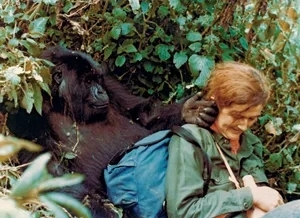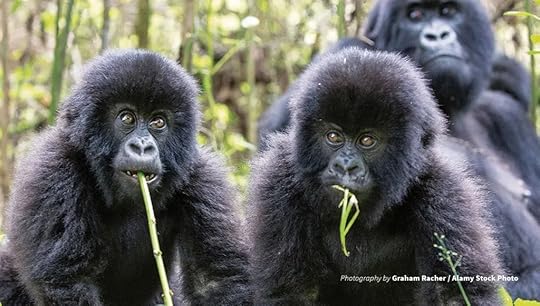Gorilla Doctors of Rwanda
Click on any highlighted area for more information. All photos for this blog are from the internet.
I have always been skeptical of habituating wild animals to humans. I’ve seen the damage this has done to the bears in the National Parks in the 60s when I vividly remember traveling in Yosemite as a 12-year-old with my family. Dad encouraged us to crack our car windows to feed bread to the bears…and, so we did. We have home movies of this insanity. Over ten years later when I tent camped there again as an adult, bears were rummaging campgrounds to access the campers’ delicacies. That night armed rangers roamed our campsite tranquilizing the bears as they ripped open a Fiat convertible seeking store-bought food. The damage humans have done is evident. My third blog on Rwanda provided me with another great lesson about humans and wildlife.

Now, 60 years later, what good would it do to habituate wild gorillas to humans in Rwanda and Uganda? Eventually, the reason became clear in the 1960s, when Dian Fossey, an American primatologist, did her research of the gorillas. Only about 250 lived in the wild in Rwanda at that time.
As I had said in my last blog, poachers where killing and capturing them at unprecedented numbers. In addition, villagers were encroaching into their habitat, and humans and their proximity to each other was a concern for disease transmission. As Fossey continued her research, she sought to protect the gorillas to prevent poaching and injuries from traps. When Fossey was tragically murdered in 1985, her 20-year effort to protect the gorillas continued and the gorilla population gradually increased. Ultimately, AWF (Africa Wildlife Foundation), the Fauna Preservation Society, and the World Wildlife Fund formed a consortium to bring various funds and initiatives under one tent and help fulfill Rwanda’s request to preserve the gorillas. The Mountain Gorilla Project, with AWF at the helm, focused on capacity-building, anti-poaching, and awareness-building. The project also worked to habituate mountain gorillas to tourist groups, and training Rwandan rangers about guiding.
By the end the 90s, tourism income was Rwanda’s largest earner of foreign exchange, making gorilla protection a national priority. During this time, a young conservationist and former Peace Corps volunteer from Zaire, Craig Sholley (today AWF senior vice president) joined the project. Rwanda now has over 1000 gorillas (10 families) and still growing.
On my Feb/Mar 2023 tour with OAT (Overseas Adventure Travel) we spent 90 precious minutes with Dr. Gaspard featured in the video below. Despite the efforts, snares are still an issue as hunters set traps to capture other small animals. So, with cooperation from the Rwandan government, veterinarians gradually habituated themselves with the gorillas so they could get close enough to provide care. Overtime, this was achieved. Click on this video of the Doctors in action.
The genetics separating the gorillas from humans is very small; we share 96-98% of the same DNA. Just as one human might be over protective of their child, the gorilla parent is no different.

Recently when a baby gorilla’s leg became snared in a poachers trap, initially the silver back would not let the gorilla doctors approach. After a few days the silver back understood and allowed the doctors to release and treat the baby with success.
As far as the gorillas are concerned, I now think differently about wildlife habituation. This human interaction has not only allowed medical treatment to occur, the gorilla population to grow, but also gorilla tourism to flourish which benefits the country and her people as well. A Win Win for all. Let’s be mindful of the balance of our precious home called EARTH.
Join my email list for periodic blogs with companion photos and stories of my travels
Processing… Success! You're on the list. Whoops! There was an error and we couldn't process your subscription. Please reload the page and try again.



